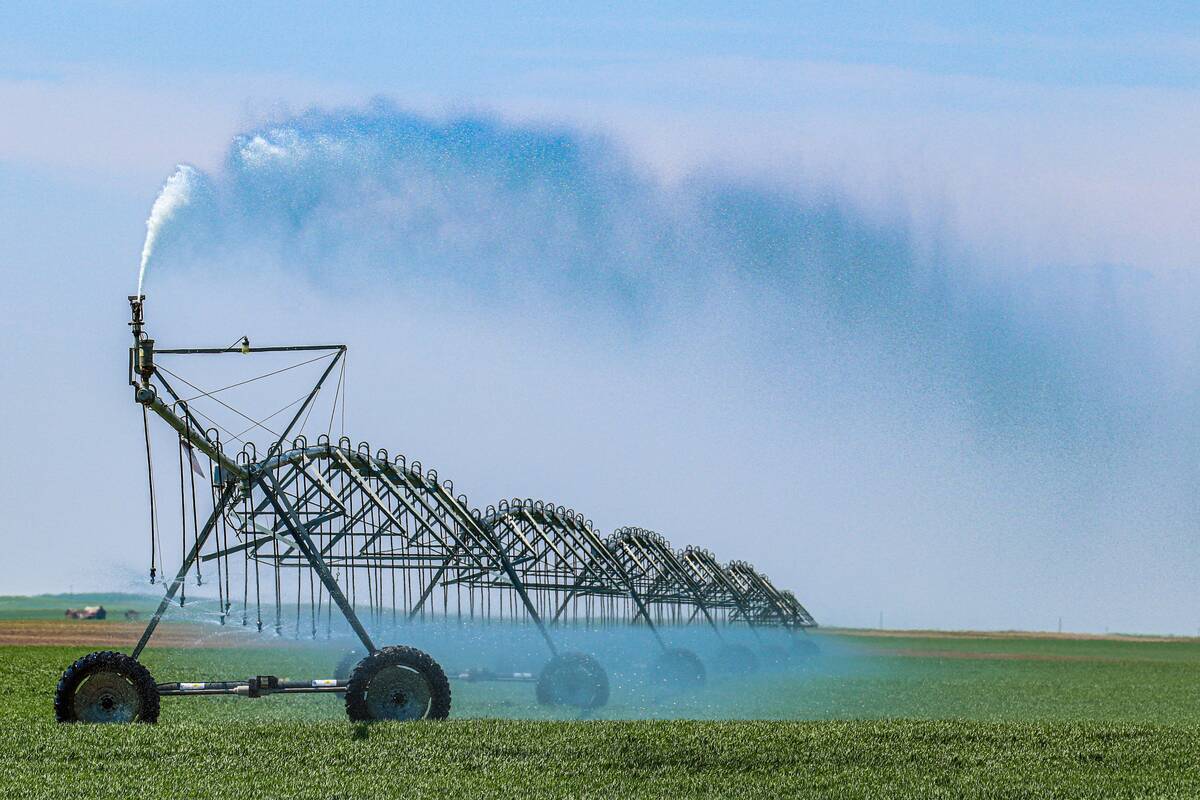Jack Moerman has seen the best of times and the worst of times during his 30 years of raising hogs in Alberta.
He considers the past five years to be among the worst.
Moerman, vice-chair of Alberta Pork, is a partner in a 300-sow, farrow-to-wean operation. He said the venture is barely staying viable and after talking with other producers across the province this fall, he knows there is a “dull ache” across the industry.
Other industry officials are using words like “bleak” and “unprecedented hurt” to describe the current difficulties among Canadian hog producers as a mounting tide of uncertainty washes over the industry.
Read Also

Irrigation capacity questioned
Some are highly skeptical that Canada could massively expand irrigation in Saskatchewan and Alberta so that 10 per cent of Canada’s farmland is irrigated.
Causing the uncertainty are the rapid rise in the value of the Canadian dollar and the fallout from the bovine spongiform encephalopathy case diagnosed more than six months ago.
Canadian consumers bought more beef this year as a show of support for cattle producers, but another effect was a reduction in domestic demand for pork. That further depressed wholesale pork prices and caused major cuts in the number of hogs processed in Canada.
“I don’t think many people appreciated just how hard that really hit us,” said Martin Rice, executive director of the Canadian Pork Council, talking about the spillover from the BSE crisis.
“For the packers to get a price from the domestic retailers was quite a challenge. To get the retailers to buy any amount of pork required some significant discounting.”
That, in turn, dragged down prices for live finished hogs in Canada, particularly those that were not being produced under contract with packers at pre-established prices.
Also hovering over the industry is uncertainty about where the Americans are headed with their plans to implement mandatory country-of-origin labelling in the fall of 2004. There is a fear regulations will create added cost and hassle for American importers of Canadian hogs.
And there is another question troubling hog producers in Alberta and Manitoba: where is government when you really need it?
Moerman said Alberta pork producers have been lobbying for an ad-hoc assistance program from government.
But getting the attention of government is difficult when there is so much attention focused on the BSE crisis in the cattle industry.
“As an industry, we have not been totally overlooked, but we have not been treated fairly,” he said.
Debt among hog producers is climbing and equity in hog barns is dwindling, he added.
With fewer people interested in such ventures, lenders tend to attach a lower value to them than they did previously.
“The banks are getting nervous,” said Paul Hodgman, assistant general manager of the Alberta Pork Council.
The underlying question is what kind of hog industry will emerge once current challenges have passed.
A partial answer to that question might lie in a recent report prepared by the George Morris Centre, which studied the recent surge in hog and pork exports from Canada to the United States during the third quarter of this year.
The study found that feeder-weaner exports have increased 156 percent since 1998. By comparison, slaughter hog exports declined 26 percent during that same period.
The study also found that Canada has a competitive advantage in the production of weaner hogs, while the United States corn belt holds the advantage in finishing hogs because of the abundant feed supply there.
Unless that trend changes, one of the strengths in the Canadian hog industry could remain in the production of weaner pigs.
At the same time, there is growing resentment within the American hog industry toward increasing imports of Canadian weaners. The impending country-of-origin labelling could thwart weaner exports to the U.S. if it becomes mandatory next year.
In summing up the current state of the Canadian hog industry, Canadian Pork Council president Edouard Asnong said 2003 has turned out to be “annus horribilis” for Canadian producers.
“Factors such as the large and rapid appreciation of the Canadian dollar, and the single incident of BSE in Canada, have combined with ample worldwide supply and higher feed costs to cause major losses at both the producer and processor levels,” Asnong said.
















